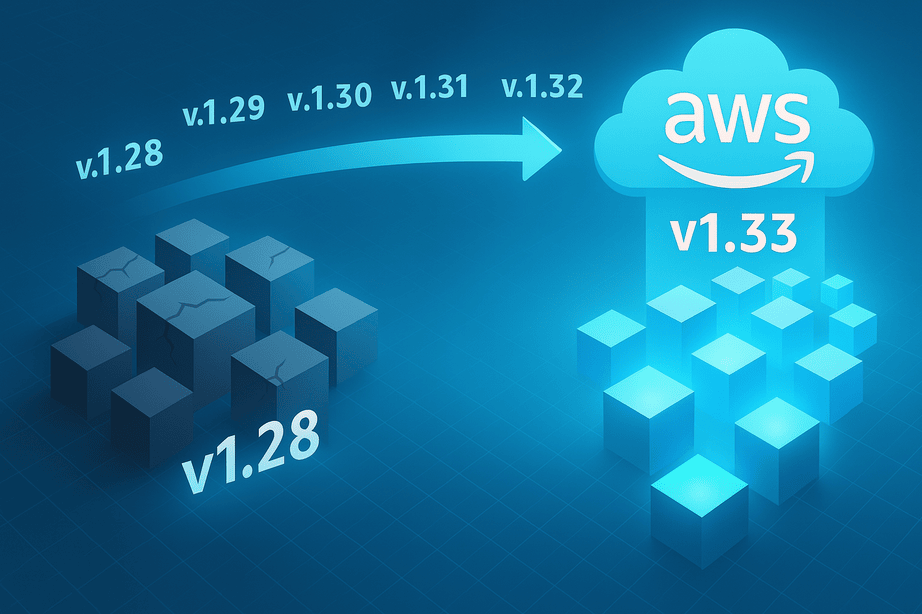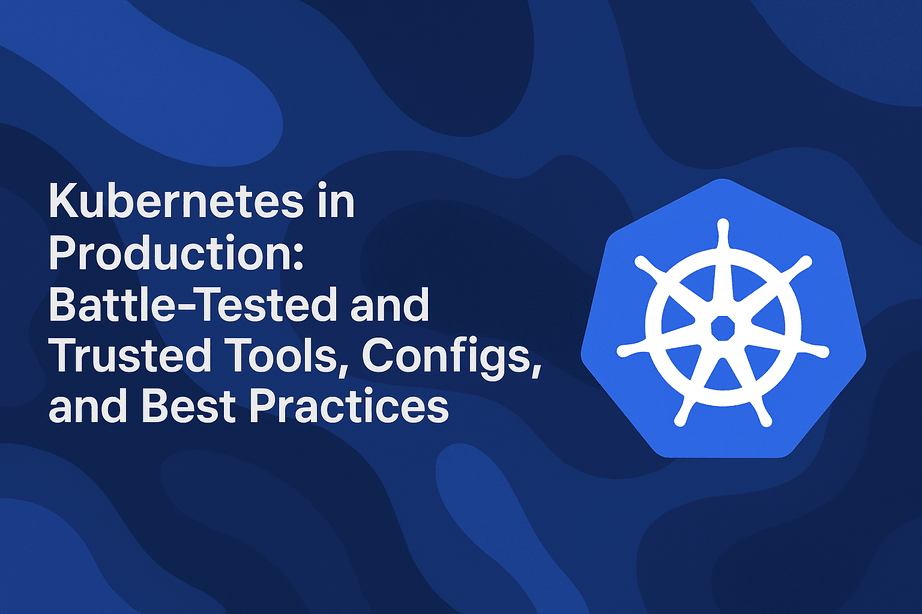A Kubernetes cluster at full throttle is a combination of multiple workloads made up of pods, deployments, services, statefulsets, and more. These services communicate with each other in many scenarios to achieve specific tasks. For example, in an e-commerce app deployed to a Kubernetes cluster, there could be a cart microservice which is involved in keeping track of items added to the cart, and another service called the payment service which communicates with the payment gateway. For a checkout to work successfully, the cart service will need to send the total cost of items in the cart for the payment service to process.
Traditionally, communication between pods in Kubernetes has no validation or protection layer. This means all pods within Kubernetes are allowed to communicate freely, which is not ideal. Any malicious service can make requests to services without validation, which could pose a security risk to services running in the Kubernetes cluster.
Istio is a service mesh, that can be deployed into your Kubernetes cluster to enforce pod-pod communication security. Hold… up, what is Istio?
What is Istio?
Istio is an open-source service mesh platform designed to manage, secure, and observe microservices in a distributed system. Think of it as a smart layer between your applications and the network, helping them communicate more efficiently and securely. It provides tools to control traffic flow between services, enforce security policies like authentication and encryption, and collect detailed metrics and logs to monitor how services are performing. Istio simplifies complex tasks like load balancing, service discovery, and failure recovery, making it easier for developers to focus on building their applications rather than worrying about the underlying infrastructure. By using Istio, teams can ensure their microservices are reliable, secure, and easy to troubleshoot, even as the system grows in complexity.
Features of Istio
Below is a detailed explanation of its features, examples of how they are used, and real-life applications:
1. Traffic Management: Istio provides fine-grained control over traffic between services. It allows you to set rules for routing, load balancing, and fault injection. For example, you can route a percentage of traffic to a new version of a service for A/B testing or gradually roll out updates. In real life, an e-commerce platform might use this to test a new checkout feature with a small group of users before a full rollout.
2. Security: Istio enhances security by enabling mutual TLS (mTLS) encryption between services, ensuring that communication is secure and authenticated. It also provides role-based access control (RBAC) to restrict who can access specific services. For instance, a banking application might use Istio to encrypt communication between its payment processing and user authentication services, ensuring sensitive data is protected.
3. Observability: Istio offers detailed monitoring, logging, and tracing of service interactions. It integrates with tools like Prometheus, Grafana, and Jaeger to provide insights into service performance and dependencies. A real-life example is a logistics company using Istio to track and analyze the performance of its shipment tracking service, identifying bottlenecks and improving delivery times.
4. Policy Enforcement: Istio allows you to define and enforce policies for rate limiting, quotas, and service-level agreements (SLAs). For example, a video streaming service might use Istio to limit the number of requests per user to prevent abuse and ensure fair usage.
5. Resilience: Istio improves the resilience of microservices by providing features like retries, timeouts, and circuit breakers. These help prevent cascading failures and ensure services remain available during high traffic or failures. A real-life application could be a social media platform using Istio to handle sudden spikes in traffic during major events, ensuring the platform remains stable.
6. Service Discovery: Istio automatically detects and registers services in the mesh, simplifying the process of connecting and communicating between services. For example, a ride-sharing app might use Istio to dynamically discover and connect its driver and passenger services, ensuring seamless communication.
7. Multi-Cluster Support: Istio supports multi-cluster deployments, enabling services to span across multiple Kubernetes clusters. This is useful for organizations with global operations, such as a multinational corporation using Istio to manage services across different regions while maintaining consistent policies and security.
Now we understand what Istio is, and the functionalities of Istio, let us install Istio and enable its sidecar.
Installing and Enabling Istio Sidecar
Installing Istio via Helm and enabling the sidecar injection per namespace involves several steps. Below is a detailed guide:
Steps to Install Istio via Helm
1. Prerequisites:
– Ensure you have a Kubernetes cluster running.
– Install `kubectl` and `helm` (v3 or later) on your local machine.
– Add the Istio Helm repository.
helm repo add istio https://istio-release.storage.googleapis.com/charts helm repo update
2. Create the Istio Namespace:
Istio components will be installed in the `istio-system` namespace.
kubectl create namespace istio-system
3. Install the Istio Base Chart:
The base chart contains cluster-wide resources used by Istio.
helm install istio-base istio/base -n istio-system
4. Install the Istiod Chart:
Istiod is the control plane component that manages service discovery, configuration, and certificate management.
helm install istiod istio/istiod -n istio-system --wait
5. Verify the Installation:
Ensure all Istio components are running.
kubectl get pods -n istio-system
Enable Sidecar Injection per Namespace
1. Label the Namespace:
Istio uses Kubernetes labels to determine which namespaces should have sidecar injection enabled. Label the desired namespace with `istio-injection=enabled`.
kubectl label namespace <your-namespace> istio-injection=enabled
Example:
kubectl label namespace default istio-injection=enabled
2. Deploy Applications:
Deploy your applications to the labeled namespace. Istio will automatically inject the sidecar proxy (Envoy) into each pod.
Example deployment:
kubectl apply -f your-app-deployment.yaml -n <your-namespace>
3. Verify Sidecar Injection:
Check that the sidecar has been injected into your pods.
kubectl get pods -n <your-namespace>
Look for containers named `istio-proxy` in the pod description:
kubectl describe pod <your-pod-name> -n <your-namespace>
How to Disable Sidecar Injection
kubectl label namespace default istio-injection-
Optional: Manual Sidecar Injection
If you don’t want to enable automatic sidecar injection for an entire namespace, you can manually inject the sidecar into specific deployments using the `istioctl` command:
1. Download istioctl:
Download the Istio CLI tool from the Istio release page.
2. Manually Inject the Sidecar:
Use `istioctl kube-inject` to modify your deployment YAML and include the sidecar.
istioctl kube-inject -f your-app-deployment.yaml | kubectl apply -f -
Securing Pod Communication
In Istio, you can use AuthorizationPolicy to enforce fine-grained access control between pods (services) in your mesh. Below is an example of an AuthorizationPolicy that validates and restricts pod-to-pod communication.
Scenario:
– Suppose you have two services: `frontend` and `backend`.
– You want to ensure that only the `frontend` service can communicate with the `backend` service.
AuthorizationPolicy Code:
apiVersion: security.istio.io/v1beta1 kind: AuthorizationPolicy metadata: name: allow-frontend-to-backend namespace: default # Replace with your namespace spec: selector: matchLabels: app: backend # Applies to pods with the label `app: backend` action: ALLOW rules: - from: - source: principals: ["cluster.local/ns/default/sa/frontend"] # Only allow requests from the `frontend` service account to: - operation: methods: ["GET", "POST"] # Restrict to specific HTTP methods (optional) paths: ["/api/*"] # Restrict to specific paths (optional)
Explanation:
1. `selector`:
– The policy applies to pods with the label `app: backend`. You can adjust the label to match your backend service.
2. `action: ALLOW`:
– This policy allows requests that match the specified rules.
3. `source.principals`:
– The `principals` field specifies the service account of the `frontend` service. Istio uses SPIFFE identities for service accounts, formatted as:
cluster.local/ns/<namespace>/sa/<service-account-name>
– Replace `default` with the namespace of your `frontend` service and `frontend` with the service account name.
4. `to.operation`:
– Optional: You can restrict the allowed HTTP methods (e.g., `GET`, `POST`) and paths (e.g., `/api/*`).
Steps to Apply the Policy:
1. Save the above YAML to a file, e.g., `authz-policy.yaml`.
2. Apply the policy using `kubectl`:
kubectl apply -f authz-policy.yaml
3. Verify the policy:
kubectl get authorizationpolicy -n default
Real-Life Use Case:
– In a microservices architecture, you might have a `frontend` service that interacts with a `backend` service to fetch data. By applying this `AuthorizationPolicy`, you ensure that only the `frontend` service can communicate with the `backend` service, preventing unauthorized access from other services.
Testing the Policy:
– Deploy a test pod and try to access the `backend` service from it. The request should be denied unless it originates from the `frontend` service.
Example test command:
kubectl run test-pod --image=curlimages/curl --rm -it -- sh curl http://backend.default.svc.cluster.local/api/data
If the policy is working correctly, requests from unauthorized pods will be blocked.
This `AuthorizationPolicy` ensures secure and validated communication between your services in Istio.
Securing Namespace Communication
In Istio, you can use AuthorizationPolicy to enforce access control between namespaces. Below is an example of an `AuthorizationPolicy` that validates and restricts communication from one namespace to another.
Scenario:
– Suppose you have two namespaces: `frontend-ns` and `backend-ns`.
– You want to ensure that only services in the `frontend-ns` namespace can communicate with services in the `backend-ns` namespace.
AuthorizationPolicy Code:
apiVersion: security.istio.io/v1beta1 kind: AuthorizationPolicy metadata: name: allow-frontend-ns-to-backend-ns namespace: backend-ns # Apply this policy in the backend namespace spec: selector: matchLabels: app: backend # Applies to pods with the label `app: backend` in the backend namespace action: ALLOW rules: - from: - source: namespaces: ["frontend-ns"] # Only allow requests from the `frontend-ns` namespace to: - operation: methods: ["GET", "POST"] # Restrict to specific HTTP methods (optional) paths: ["/api/*"] # Restrict to specific paths (optional)
Explanation:
1. `selector`:
– The policy applies to pods with the label `app: backend` in the `backend-ns` namespace. Adjust the label to match your backend service.
2. `action: ALLOW`:
– This policy allows requests that match the specified rules.
3. `source.namespaces`:
– The `namespaces` field specifies that only requests originating from the `frontend-ns` namespace are allowed.
4. `to.operation`:
– Optional: You can restrict the allowed HTTP methods (e.g., `GET`, `POST`) and paths (e.g., `/api/*`).
Steps to Apply the Policy:
1. Save the above YAML to a file, e.g., `authz-policy-ns-to-ns.yaml`.
2. Apply the policy using `kubectl`:
kubectl apply -f authz-policy-ns-to-ns.yaml
3. Verify the policy:
kubectl get authorizationpolicy -n backend-ns
Real-Life Use Case:
– In a multi-tenant Kubernetes cluster, you might have separate namespaces for different environments (e.g., `frontend-ns` for frontend services and `backend-ns` for backend services). By applying this `AuthorizationPolicy`, you ensure that only services in the `frontend-ns` namespace can communicate with services in the `backend-ns` namespace, preventing unauthorized access from other namespaces.
Testing the Policy:
– Deploy a test pod in a different namespace (e.g., `test-ns`) and try to access the `backend` service in the `backend-ns` namespace. The request should be denied unless it originates from the `frontend-ns` namespace.
Example test command:
kubectl run test-pod -n test-ns --image=curlimages/curl --rm -it -- sh curl http://backend.backend-ns.svc.cluster.local/api/data
If the policy is working correctly, requests from unauthorized namespaces will be blocked.
This `AuthorizationPolicy` ensures secure and validated communication between namespaces in Istio.
If you intend to enforce Zero Trust policy by default for all services running in the Kubernetes cluster, an explicit deny can be implement for all pods and services ensuring that they are not able to communicate, then allow explicit definitions of which pods can communicate. The following script when applies enables and explicit deny of all pod communications within a cluster
apiVersion: security.istio.io/v1beta1
kind: AuthorizationPolicy
metadata:
name: deny-all
namespace: default
spec:
{}
Apart from enforcing strict communication rules within the cluster, the communication between components can also be encrypted, here is how Istio enables that
Encrypt Service Communication with mTLS
To enable mutual TLS (mTLS) between two pods using Istio, you need to configure Istio’s PeerAuthentication and DestinationRule Custom Resource Definitions (CRDs). Below is a step-by-step guide with sample configuration code.
Scenario:
– You have two services: `frontend` and `backend`.
– You want to enforce mTLS encryption for communication between these two services.
Steps to Enable mTLS:
1. Enable mTLS in the Namespace:
Use a PeerAuthentication resource to enforce STRICT mTLS for all services in the namespace.
2. Configure mTLS for the Backend Service:
Use a DestinationRule to specify that the `backend` service should use mTLS.
Sample Configuration Code:
1. PeerAuthentication (Enforce STRICT mTLS):
This configuration enforces mTLS for all services in the `default` namespace (replace `default` with your namespace if different).
apiVersion: security.istio.io/v1beta1 kind: PeerAuthentication metadata: name: default-strict-mtls namespace: default # Replace with your namespace spec: mtls: mode: STRICT # Enforce mTLS for all services in the namespace
2. DestinationRule (Configure mTLS for Backend Service):
This configuration ensures that the `frontend` service communicates with the `backend` service using mTLS.
apiVersion: networking.istio.io/v1beta1 kind: DestinationRule metadata: name: backend-mtls namespace: default # Replace with your namespace spec: host: backend.default.svc.cluster.local # Replace with your backend service name trafficPolicy: tls: mode: ISTIO_MUTUAL # Use Istio's built-in mTLS
Explanation:
1. PeerAuthentication:
– The `mode: STRICT` setting ensures that all communication within the namespace is encrypted using mTLS.
– This applies to all services in the `default` namespace.
2. DestinationRule:
– The `host` field specifies the `backend` service.
– The `ISTIO_MUTUAL` mode ensures that Istio automatically manages the certificates and keys for mTLS.
Steps to Apply the Configuration:
1. Save the PeerAuthentication configuration to a file, e.g., `peer-authentication.yaml`, and apply it:
kubectl apply -f peer-authentication.yaml
2. Save the DestinationRule configuration to a file, e.g., `destination-rule.yaml`, and apply it:
kubectl apply -f destination-rule.yaml
3. Verify the configuration:
– Check that the `PeerAuthentication` and `DestinationRule` resources are created:
kubectl get peerauthentication -n default kubectl get destinationrule -n default
– Test communication between the `frontend` and `backend` services to ensure mTLS is working.
Testing mTLS:
1. Deploy the `frontend` and `backend` services if they are not already deployed.
2. Use `istioctl` to verify that mTLS is enforced:
istioctl authn tls-check <frontend-pod-name> backend.default.svc.cluster.local
The output should show that mTLS is enabled for the `backend` service.
3. If you try to access the `backend` service from a pod without mTLS (e.g., outside the mesh), the request will be denied.
Real-Life Use Case:
– In a microservices architecture, you might have sensitive communication between services (e.g., a `frontend` service sending user data to a `backend` service). By enforcing mTLS, you ensure that the communication is encrypted and authenticated, preventing eavesdropping or tampering.
This configuration ensures secure, encrypted communication between the `frontend` and `backend` services using Istio’s mTLS capabilities.
Conclusion
Ensuring security and authorization of pods and services communicating within the Kubernetes cluster adds a layer of security within the Kubernetes cluster apart from the external security features which should already exist on the Kubernetes cluster. This gives extra confidence in the security of the microservices running within the cluster and this can further be used to implement zero trust across all components within the cluster, and further enhance the security of the system.







![How to Easily Install Kubernetes on Ubuntu 24.04 [Beginner Friendly] 8 k8s-ubuntu](https://www.ewere.tech/wp-content/uploads/2025/06/k8s-ubuntu-small.png)